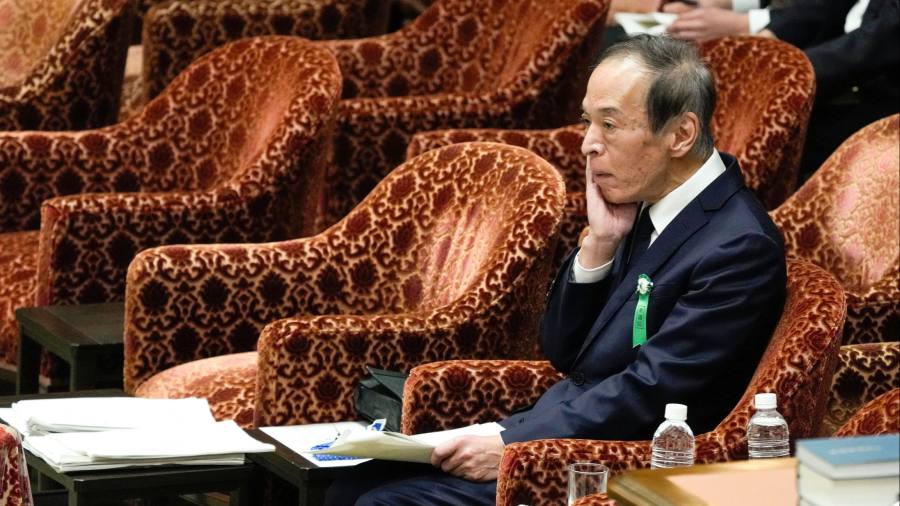
The failure of Silicon Valley Bank and the ensuing turmoil at Credit Suisse have put Japan’s ailing regional banking sector and its financial institutions under the tightest market scrutiny since the 2008 global financial crisis.
In a reflection of contagion concerns, Japan’s central bank and financial authorities held a crisis meeting in mid-March, while shares in the country’s banks have endured a brutal sell-off since the SVB collapse, falling more heavily than their counterparts in the US and Europe as concerns spread about Japanese lenders’ resilience in an era of interest rate increases.
From March 9 to Friday, Japan’s Topix banks index was down 17 per cent, compared with a 13 per cent decline for the S&P banks index in the US and a 16 per cent fall for the Euro Stoxx banks index.
The sell-off played into longstanding worries over the risks that have accumulated in Japan’s regional banking sector, whose income has been in long-term decline but whose combined bank deposits account for nearly half of the country’s total cash.
“The crucial question is whether Japan’s regional banks and financial system can withstand the impact when Japan raises interest rates in the future as inflation and wages rise,” said Rie Nishihara, chief Japan strategist at JPMorgan Securities.
Japanese lenders had a low exposure to the $17bn wipeout of additional tier 1 bonds at Credit Suisse. But the nature of the SVB collapse, with a focus on large pools of deposits invested in US government bonds, appeared to echo Japanese regional banks’ historic response to decades of ultra-low interest rates.
With a high savings rate and stagnant economy creating a vast pool of savings on deposit, Japan’s 78 listed banks have been voracious buyers of US Treasuries and other global assets, from collateralised loan obligations in the US to European covered mortgage bonds.
With the rise in US interest rates, Japanese regional banks have suffered big hits to their holdings of US Treasury bonds, whose value has fallen as yields have risen.
Officials at the Financial Services Agency say risk is low. “The debt condition, liquidity and capital base are all stable. SVB’s situation is completely different from that of Japanese regional banks,” an FSA official said. Still, regulators have been surveying the securities that regional banks have bought since the summer of 2021 to examine the risks they run if borrowing costs start to rise.
In addition to the massive deposits, FSA officials say Japanese banks face higher capital and liquidity standards than SVB and say the risk of sudden bank withdrawals and cancellation of policies at life insurers is low.
Another mitigating factor is that Japanese regional banks also sit on sizeable unrealised gains from substantial portfolios of equities in listed Japanese companies, which have risen in value as Japan’s stock markets have reached heights not seen in three decades.
Nicholas Smith, chief Japan equity strategist at CLSA, said that while rising yields on US government debt looked attractive compared with Japanese government bonds, soaring hedging costs erased the logic for such a trade and had prompted Japanese banks and other investors to slow or reverse purchases of longer-dated US debt.
Currently, said Smith, three-month hedging costs are 5.2 per cent against a yield differential on 10-year JGBs of 3.5 per cent — a yield after hedging of negative 1.7 per cent.
“Against that, even the 0.27 per cent on JGBs looks attractive and the 2.7 per cent dividend yield on Japanese equities looks even better,” he said.
Japanese banks also appear to have limited exposure to “held-to-maturity” bonds — bonds you plan to hold on to until they are repaid, and which do not have to be assessed at their current market value. That contrasted with SVB’s chunky HTM bond holdings, which were not hedged.
According to an analysis by JPMorgan, its sample of Japanese banks collectively held ¥27tn ($205bn) of Japanese government bonds in an HTM portfolio, compared with about ¥109tn in “available-for-sale” accounts, which are marked to market. About half of the AFS JGBs were underwater as of the end of September, JPMorgan said, raising the risk of growing unrealised losses at smaller banks.
Jefferies analyst Hideyasu Ban has estimated that HTM bonds accounted for 55 per cent of the shareholders’ equity at major banks, excluding Japan Post Bank, and 8 per cent at regional banks, with the bulk of those being domestic bonds.
“If the interest rate starts rising again at some point, the latent losses will increase, but such losses will not hit their income statement nor result in permanent loss of capital unless they are forced to realise losses due to liquidity concerns,” Ban wrote in a report.
Despite the contrast with SVB’s situation, analysts say the market turmoil triggered by its collapse provides a window into the interest rate and credit risks Japanese financial institutions face as the BoJ comes under pressure to shift away from its ultra-loose monetary policy under its new governor Kazuo Ueda.
Since December 2022, when the BoJ stunned markets by tweaking its yield curve controls slightly, markets have speculated that it was moving closer to abandoning its policy of buying massive amounts of JGBs to keep yields anchored near zero.
Investors placed large bets on the potential for higher banking profits, pushing the Topix Banks index 30 per cent higher between mid December and the second week of March before the index plunged last week.
The BoJ now allows 10-year JGB yields to fluctuate by 0.5 percentage points above or below its target of zero. Even if that cap is lifted the market thinks the bonds would trade with a yield of about 1 per cent, but those expectations could change if inflation does not slow in line with the BoJ’s prediction.
Economists have pointed to upside risks to Japan’s inflationary trend with consumer prices, excluding energy and food prices, rising 3.5 per cent in February, the fastest year-on-year increase since January 1982.
“If the yields are at about 1 per cent, Japanese banks are safe but if that goes to 1.5 or 2 per cent, there will be more smaller banks that will have problems with capital,” JP Morgan’s Nishihara said.

